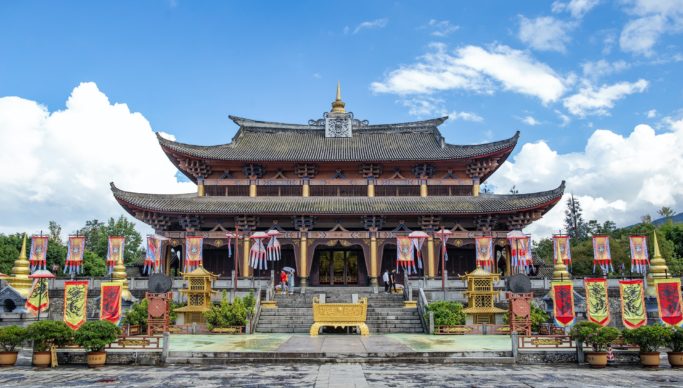
Pew Survey: Six Key Insights into Buddhism in China
- By Sam Field --
- 23 Oct 2023 --
Although only 4 percent of Chinese adults formally identify with Buddhism, even though it is China’s largest officially recognized faith, the numbers may be misleading. In fact, that is one of a half-dozen surprising facts about Buddhism reported by the Pew Research Center in September as part of its recent survey of religion in China.
Titled “6 Facts About Buddhism in China,” the report relies on research carried out by academic institutions within the nation, alongside official data provided by the Chinese government regarding registered Buddhist temples.
Here are some of the highlights:
1. In a country where just 10 percent of the people identify with any religion at all, official membership does not encompass the complete scope of Buddhist faith and observance.
In fact, numerous individuals who partake in Buddhist beliefs and customs refrain from identifying as Buddhists. This could be due to their practice of Buddhism along with Daoism or folk religion; their belief that only monks or nuns should rightfully claim to be Buddhist; or the fact that Buddhism does not mandate formal affiliation.
2. One-third of the adult population in China holds faith in Buddha and/or bodhisattvas—the latter refer to enlightened entities who have opted to remain connected to the human realm to provide assistance to others.
Within this category, 17 percent of Chinese adults have faith in Buddha and/or bodhisattvas, in addition to other divine beings such as Daoist “immortals,” Jesus Christ, Allah or Tianzhu (the term Chinese Catholics use for God).
3. A significant number of Chinese who claim to have faith in Buddhist deities may actually adhere to their traditional or folk religious interpretations.
In China, the blending of various beliefs is widespread, particularly within traditional religious practices. An illustration of this is the worship of the bodhisattva Guanyin (Sanskrit name: Avalokiteśvara), who is venerated as both a bodhisattva and a deity in folk religion who answers prayers related to matters such as well-being, prosperity and male offspring.
4. Buddhism is closely interwoven with Daoism, traditional Chinese folk beliefs, and Confucianism. As an illustration, approximately 35 percent of adult Chinese individuals engage in the ritual of burning incense for the purpose of worshiping Buddha or other divine entities at least once annually, with 11 percent performing this act on a monthly basis.
Buddhists commonly embrace the Confucian concept of filial piety and have incorporated customs that are consistent with the Confucian practice of ancestor veneration, including offering prayers for the welfare of departed ancestors.
5. A large proportion of Chinese Buddhists adhere to Han Buddhism, which is a sect of Mahayana Buddhism that has entwined with various other Chinese belief systems for many centuries.
Han Buddhism received significant imperial patronage, particularly during the Tang dynasty (618-907), which facilitated its expansion throughout the region. Presently, over 80 percent of officially registered Buddhist temples in China adhere to the Han Buddhist tradition.
6. Besides Protestantism, Catholicism, Islam and Daoism, Buddhism is among only five religions officially acknowledged by the Chinese government.


















